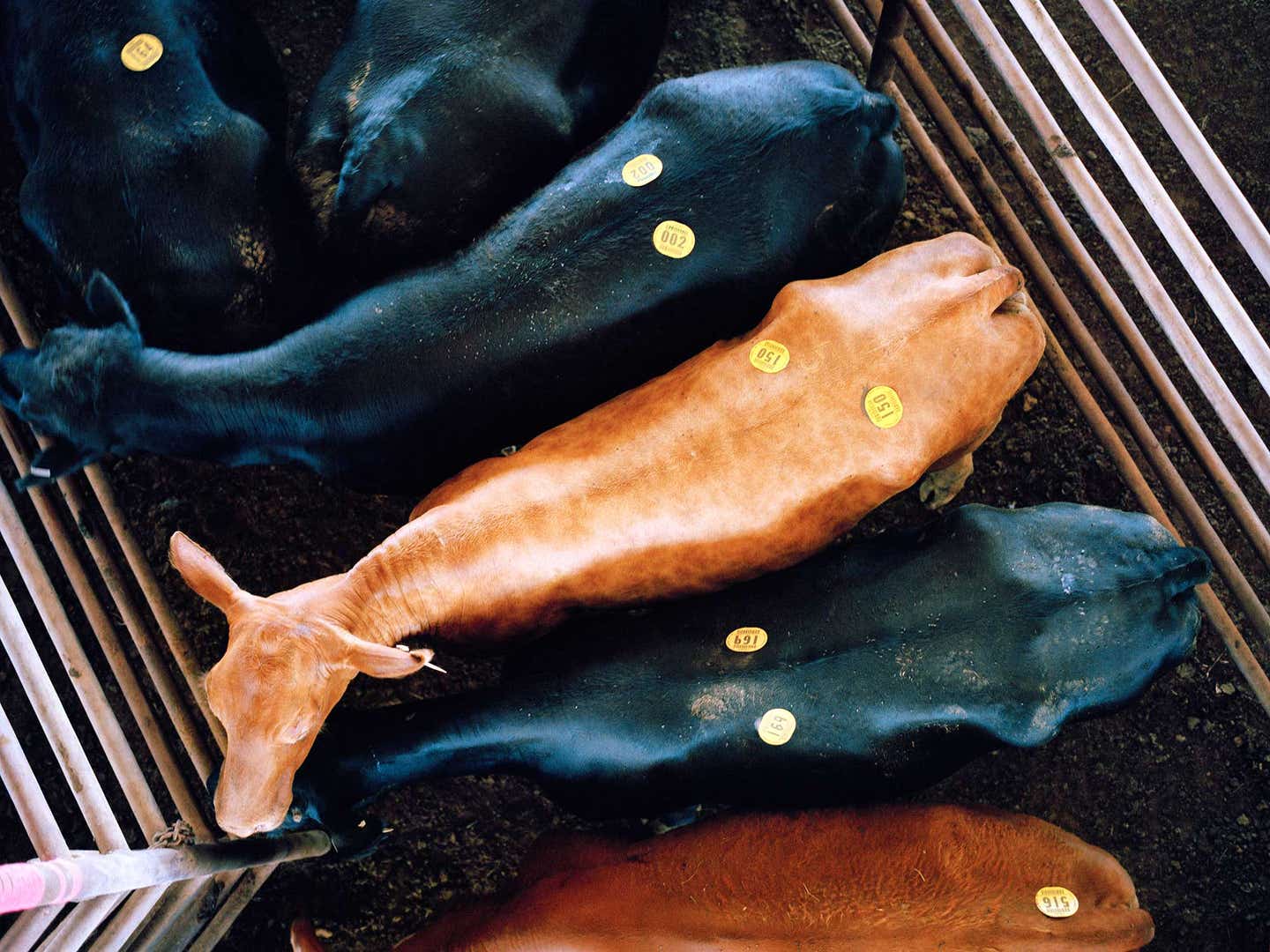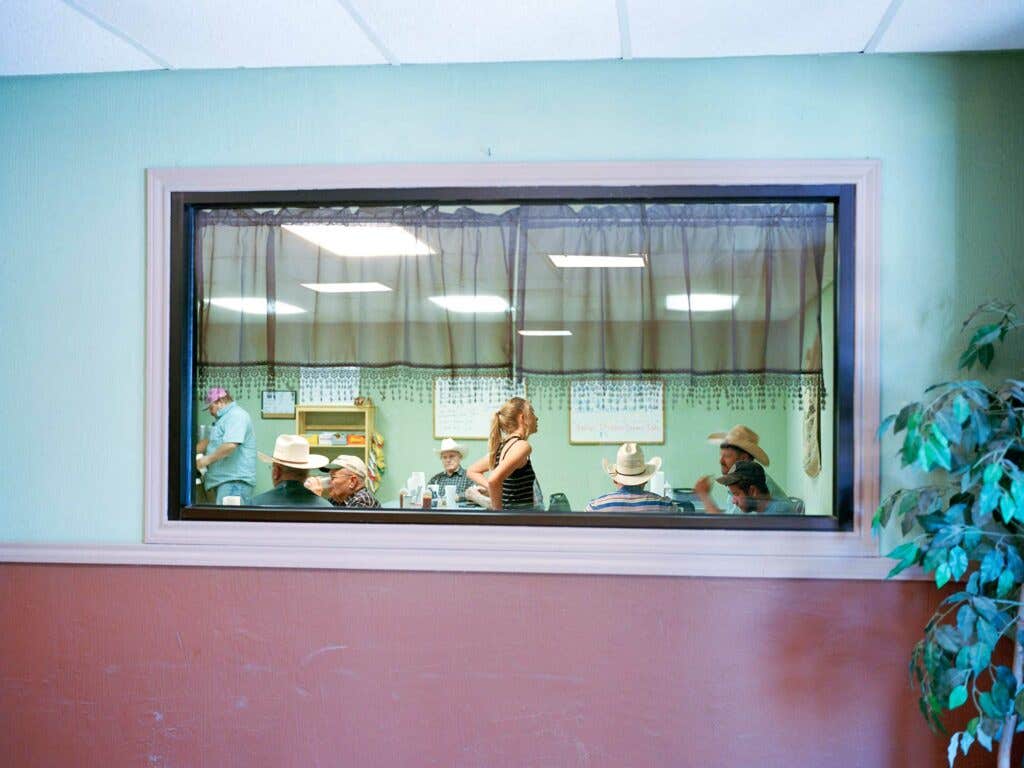
The Best Place to Get a Ribeye Is at a Cattle Auction
The cafés attached to sale barns in Texas are cornerstones of the community—and great spots to grab a burger

It’s almost time for auction at the cattle sale barn in Stephenville, Texas, and Nicky Maines is hard at work whipping up meatloaf inside the barn’s wood-paneled cafe.
“We like to serve up a meat-and-three sort of situation on sale days. It gives the folks who are working some home cooking,” she says. A jovial woman with a wide grin, Maines cracks open a Dr. Pepper (this being Texas). Her husband walks in wearing well-starched overalls, chatting about chile rellenos and invites me to an upcoming, mile-long yard sale through their North Texas town. It feels like I’ve wandered into Maines’ own kitchen—not a place where hulking, buggy-eyed steers and heifers are corralled by the dozen outside, waiting to be sold.
A cafeteria like no other, sale barns across the state come with their own built-in restaurants to fuel the cattle bidders, sellers, and everyone in between. And while you won’t find any of the cattle processed on site, the close proximity of high-quality meat creates a natural relationship between menu and the auction block. The cafes are every bit as integral to the lifeblood of sale barns as the auctioneers themselves, creating a place for camaraderie after the last calf is sold.
In Texas, cow-nabbing is alive and well. Special rangers like Wayne Goodman spend their days tracking down the bad guys
A Day With the Texas Law Man Who Catches Cattle Thieves
"You won't find a better rib-eye than in a sale barn café, that's for sure," special ranger Wayne Goodman says. Goodman chases cattle thieves for a living—a bovine lawman, if you will. Smaller sale barn cafes are usually open only on auction days and focus primarily on lunch. At larger sale barns, like the Amarillo Livestock Auction, cafés are open six days a week, acting as hubs for neighbors, buck stablehands, and wizened market inspectors alike. Menus are written in Sharpie and read like a family's Sunday supper—chicken fried steak, short ribs, mayo-heavy casseroles, potatoes every which way. Calf fries, or breaded, fried bull testicles, are the most famous (re: infamous) snack to claim roots in a stockyard café, plated up for the first time in Fort Worth in the 1920s. On sale barn menus across East Texas, they can also be found under the aliases of "Rocky Mountain oysters" or "swinging beef". (Pro tip: the smaller balls are always better.)
Texans love cows—every part of the cow—and sale barns act as lynch pins in the community fabric. Gutted by a fire in 2016, the Johnson County Livestock Exchange café hadn’t even officially reopened when I visited this April. Still, the florescent-lit diner buzzed with spur-jangling cattlemen and concession stand style food: Two sun-leathered septuagenarians poked fun at my not-so-Texan accent while sucking on chili dogs, and homemade pies lined the freshly constructed counters alongside boxes of candy bars. Even without a working kitchen, no one was willing to give up the space as a gathering spot and watering hole.
As I listened in, a gaggle of women discussed recently trying lamb for the first time—faces puckered in not-so-fond remembrance. Someone brings up goat. Another mentions duck. A twentysomething girl winces, takes a juicy bite of her beef, and says, “I think I’ll just stick with my hamburger.”
Keep Reading
Continue to Next Story










